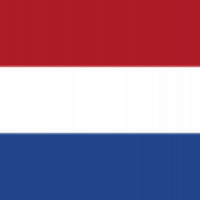Summary:
A Dutch company has developed a cost-effective alternative to existing wind turbines by using kites to generate electricity. The company is looking for a technical cooperation agreement with partners who can supply a feasible test location, therefore, supporting the development of a pilot system installation.
Description:
Kite-powered wind energy systems have the potential to majorly contribute to the global energy transition to renewables by mitigating dependency on diesel supply across remote and rural areas worldwide. This Dutch SME is specialised in generating electricity by using kites. The aim of the SME is to validate the the kite powered wind installation with partner who can supply a feasible test location.
Distributed energy generation for microgrids in remote areas around the world, especially on islands, relies on diesel, which is expensive, polluting and difficult to supply. Considering these drawbacks, the urge to hybridize with renewables is growing. Whereas solar electricity generation is only available during daylight and conventional wind turbines are often not feasible due to high transport costs and heavy foundations, Kite-powered systems offer mobile wind energy easy to integrate into existing microgrids, let it be batteries, solar, diesel or grid.
The product consists of: a ground station, that converts the mechanical energy of the kite into electrical power and reels the kite in by using the generator as a motor; a tether used to connect the kite to the ground station; a kite-control-unit that controls the roll, pitch, and yaw of the kite and takes care of the communications between the sensor unit placed on the kite and the ground station; and a hybrid between an inflatable and a fixed fibre-glass kite.
The electricity generation works in two phases, which repeated in continuous cycles result in positive net energy output. Energy is generated during the first phase when the kite is flown in a cross-wind figure-of-eight pattern to achieve a high pulling force and reel out the tether from the winch in the ground station. When the max tether length is reached, the kite's profile is adjusted in order to reel-in the tether with low force, using a small fraction of the energy produced in the previous phase. The energy generated by the system while reeling out is greater than the energy consumed to reel the kite back in. The 100kW kitepowered systems currently in development has a yearly power production potential of 450MWh.
Cooperation is foreseen within a technical cooperation agreement.
Type (e.g. company, R&D institution…), field of industry and Role of Partner Sought:
The company is looking for a partner willing to cooperate in the development of an innovative kitepowered wind energy system pilot installation. The potential partner could be any system integrator that plan, build and operate distributed energy grids, that has a feasible test location for a pilot available. The product requires an area of at least 300m (radius) free from obstacles (e.g. buildings, roads and vegetation) in order to be operated. The test location should ideally be placed away from urban areas, trafficked roads and airports. A technical cooperation is being sought in agriculture, construction, mining, oil & gas and events sectors, as these typically rely on diesel generators to power up their operational sites.
Stage of Development:
Prototype available for demonstration
IPR Status:
Patents granted
Comments Regarding IPR Status:
Worldwide
External code:
TONL20210520002








